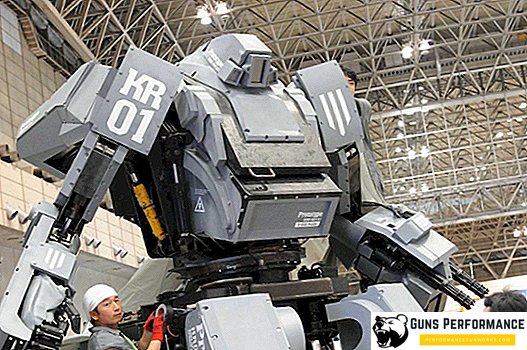DARPA, working directly with the US Department of Defense, is the main supplier of advanced military technology. Journalists are ready to give a lot to look inside and lift the veil of secrecy. The task of the Office is to preserve the technological leadership of the United States, so it is not surprising that sometimes the most fantastic ideas are being tested there.
Journalists from the Nature publication received information on the allocation of funding for the creation of a real system for managing a person’s mood. The technology is based on scanning real-time brain activity and eliminating “unwanted emotions.” One of the main tasks is the struggle with depressive states of a person.

Is it possible to control the human mood?
At first glance, this all sounds like fantasy thoughts. However, the device in question is quite realistic and does not even cause surprise in scientific circles. Chips to stimulate the brain is already used in medicine. Neuroimplants help to treat mobility disorders after a stroke or due to Parkinson's disease. Innovation is only in an attempt to influence human emotions.
According to the description of the technology, the neurochips implanted into the skull are in sleep mode most of the time. Activation occurs only when a person's mood deviates in an undesirable direction.
Scientists conducted tests and recorded human brain activity in various states. This is necessary to better imagine the brain in a particular mood. Comparison of various types of activity with the mood helped “tune” the chips.
How does managing emotions work?
Based on the data obtained, a system is created that analyzes brain activity and stimulates certain parts of the brain. Specifically, the areas responsible for mood, positive emotions, joy are implied. As soon as a person begins to feel decay, depression, sadness, the neurochip is activated and stimulates the brain.
This technology, as already mentioned, is not fundamentally new. Scientists have long studied the brain and more than once conducted experiments on the stimulation of certain areas. Now DARPA has a goal to present the technology in a convenient and compact form, as well as to come up with options for its use for military purposes.
Opinions of representatives of the academic community are divided. Some consider the technology to be quite promising, while others do not believe in the possibility of practical application. At the moment, it is planned to create an individual mood management system.

How will neurochips be used by the Ministry of Defense?
The main task of the personified system is the rehabilitation of soldiers after conflicts. Post-traumatic syndrome has become a serious problem for many American veterans. The soldiers need a complex and long-term rehabilitation under the supervision of doctors and psychologists.
They started talking seriously about this after the Vietnam War. American society has condemned the government for the results of the conflict. Vietnamese syndrome required in-depth study. The term post-traumatic stress disorder is now used, which affects not only former soldiers, but also their relatives. A person who has experienced real painful actions changes for the rest of his life.
The problem of veterans is becoming important for society and the US Department of Defense is looking for new ways of rehabilitation. One of the methods that can replace traditional treatment with a psychiatrist and medication is based on the use of neurochips. A distinctive feature of this technology is the immediate response to changes in the human condition.
People suffering from PTSD are a danger to themselves and to those around them. Some veterans complain of sudden panic attacks or mental clouding. In some situations, the patient can grab the weapon and attack other people, seeing him as the enemy. He begins to dream of military operations, which can lead to serious casualties.
In the presence of a personalized system of mood control, such sharp drops can be excluded. Conventional drug treatment is not able to provide 100% protection. In contrast, neurochips work constantly and monitor brain activity. As soon as there are signs of panic, excessive aggression, certain areas of the brain are stimulated.
As scientists say, the rest of the person will be a normal member of society. He will be able to easily communicate, work and not have problems. At the same time, some psychiatrists note the difficulty of setting, because each person is individual. Neurochip must take into account specific features and mental disorders, and this will require long-term monitoring.












